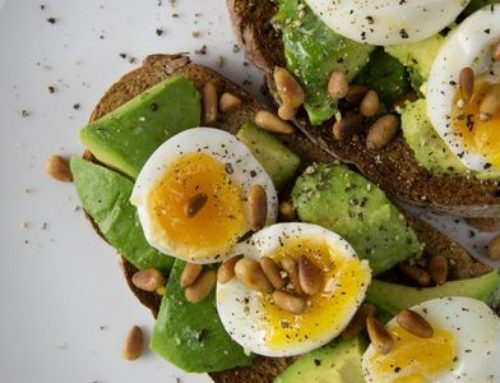
Insulin Resistance
Insulin resistance and Type 2 Diabetes are two very different conditions. Insulin resistance is often the starting point of pre-diabetes and Type 2 diabetes, and can affect anyone at any age. It makes it difficult for your body to manage blood sugar levels properly. This article here explains in further detail about what insulin resistance is.
Other factors can also lead to insulin resistance, such as your genes or health conditions like polycystic ovarian syndrome (PCOS) and even pregnancy! Pregnancy hormones can contribute to insulin resistance, which leads to gestational diabetes that occurs when a woman is pregnant and generally subsides after the baby is born. It can develop even if the expecting mother has a healthy lifestyle, or no family history of diabetes. The reason for this is explained in the following article.
Insulin resistance is often a silent pre-cursor to Type 2 Diabetes, as such it can be tricky to spot. As mentioned earlier, a strong family history and certain medical conditions may increase your risk. But even without those factors, you could still develop insulin resistance if you carry a fair amount of “toxic fat” or visceral fat. Read more about visceral fat here.
Regardless of whether your insulin resistance is related to your lifestyle, your genes, or other health conditions, it is important to manage it with good nutrition and healthy eating.
Diabetes
At the early stages of insulin resistance, your GP might tell you that you have “pre-diabetes” which is where your body is showing signs that it is struggling to cope but ultimately still able to do a fairly satisfactory job of keeping your blood sugar levels within the normal range. As insulin resistance builds up over time and worsens, it becomes increasingly difficult for your body to keep your blood sugar levels within the normal range and you’re now having high blood sugar levels. Having high blood sugar levels regularly may cause you to experience the symptoms mentioned in this article. This is the point where your GP may then diagnose you with Type 2 Diabetes.
Despite the differences between insulin resistance and diabetes, both conditions require fairly similar management when it comes to food choices and lifestyle.
What foods should I be eating?
After a diagnosis of diabetes, it can feel like your world has been thrown into chaos and that a complete overhaul of the way you eat is required to restore balance and prevent the dreaded health complications that you’ve been warned about by your GP. But a complete overhaul may be too much to handle in the long term, particularly if the way you used to eat is very different to how you want to eat now. Think of it as a car restoration or a house renovation – these projects often take a lot of time (months, even years!) depending on the condition of the car or house, and also on the goals and ambitions of the owner. Rushing to complete this, particularly by yourself without any help from experts, can often lead to shoddy results and tears of frustration.
The same applies to your eating patterns and your food habits. You’re better off focusing on one thing at a time and working on the very foundations of your eating patterns, rather than the shiny “accessory” food decisions that really should be held off till later. The key foundations to a healthy eating pattern for diabetes involves plenty of whole vegetables and fruit, wholegrains, legumes, lean protein foods and less-processed dairy products.
This is what healthy eating looks like – it’s not “rabbit food” or mountains of kale on a plate, or litres of celery juice. It’s not measly portions served on a tiny plate, and it’s certainly not some strange or exotic food or powder that you have to spend outrageous amounts of money on at some special food shop. It’s everyday food that everyone can eat, so you’re not making lonely meals for yourself separately to what the rest of the family eats. These recipes highlights clever swaps and portion tricks you can use to make your family favourites friendlier for your insulin resistance. Give them a go!
What about carbs? I was told to stop eating carbs and “go Keto”.
The Ketogenic diet – it’s the new Atkins diet, in a sense that both diets are essentially a very low carbohydrate diet. Whilst it’s true that there are some studies which show that a Keto diet has beneficial effects on blood sugar levels, there are also some negative health effects associated with the Keto diet which are often less discussed. This article here explains why a Keto diet may NOT the best solution to managing your diabetes in the long-term.
With all the conflicting information floating around, you may be left feeling confused about whether or not you should be eating carbohydrate foods. The honest truth is that carbohydrate foods are not the devil, and you shouldn’t need to cut them out of your life completely. Foods such as fruit, vegetables, pulses, legumes and wholegrains all contain carbohydrates and make up the essential foundations of a healthy eating pattern. In fact, your body is built to process carbohydrate foods! However, when your body has to battle insulin resistance, it can be difficult to process carbohydrate foods efficiently. Here are four ways you can help your body to better process carbohydrate foods.
When it comes to carbohydrate foods, there are smarter ways to go about eating them. It’s all about choosing the right amount at the right time. This article explains how you can have your carbs and eat it too!
At the end of the day, diets don’t work if your fundamental eating habits have not changed. Changing diets is like changing the wallpaper in your house to fix a crumbling wall; it holds for a while but if the foundations of your house has not been improved the walls will still continue to crack and crumble regardless of how many rounds of wallpaper you cycle through.
What about sugar?
The same goes with sugar. In recent times, sugar has been developing quite a bad reputation, and deservingly so. But is all the hysteria over sugar really valid? And *gasp* are they really adding sugar to low-fat and skim milks? (Answer: No). Before you set fire to your fruit bowl and swear of skinny cappuccinos for life, it’s worth checking this article out.
What to do with a diabetes diagnosis
If you have been diagnosed with Type 2 Diabetes, you might be wondering if there are any “special diets” that you can follow to reverse your diagnosis. There are some very rare situations where it is possible for Type 2 Diabetes to be reversed completely, however, if you have been diagnosed in your later years then this is less likely to be achieved.
It’s not all doom and gloom; it is completely possible for someone with Type 2 Diabetes to achieve a state of “remission” by making the right lifestyle and food choices consistently, long-term. It’s almost as good as a complete reversal. Read more in this article here.
Keeping your blood sugar levels in check is one of the targets of good diabetes management as excessively high blood sugar levels can lead to diabetic complications over time. Paying attention to your carbohydrate food intake is important, but there are also other things you can do to improve your blood sugar levels.
Our dietitian Melissa Yip can help you manage your insulin resistance and Type 2 Diabetes.



